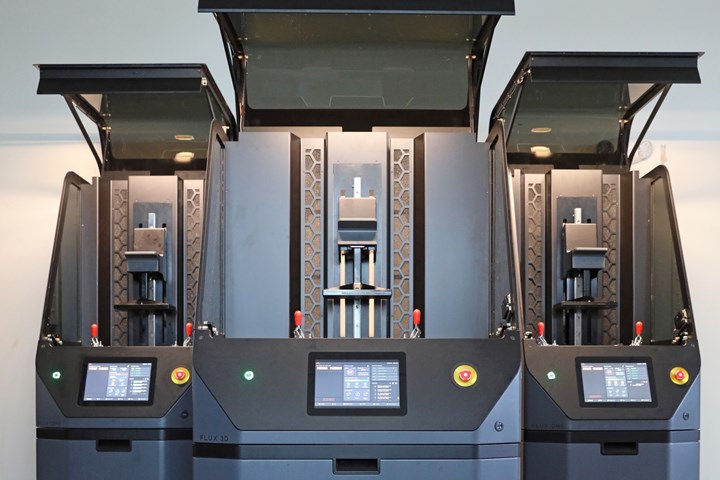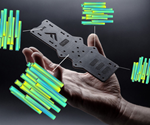Fortify expands fiber-reinforced photopolymer 3D printing line for end-use part applications
Company adds new FRP printers and open access software to enable new advanced materials, including Flux Core and Flux 3D.

Photo Credit: Fortify
Fortify (Boston, Mass., U.S.) has extended its Flux Series line for filled and fiber-reinforced photopolymers 3D printing to include two new printers and software to enable customers and partners access to develop new advanced materials. Funds from the company’s recent equity round will be used to scale up manufacturing of these printers for end-use part applications.
All Fortify 3D printers employ the company’s patented processing technology, CKM (Continuous Kinetic Mixing), which ensures that additives stay uniformly distributed throughout the material while mitigating sedimentation and aggregation. Fortify’s other proprietary technology for aligning fibers, Fluxprint magnetic alignment, is now available in two configurations.
Fortify’s FLUX Series full lineup includes:
- Flux Core (New): Fortify’s baseline 3D printer includes CKM and is ideal for processing viscous particle-filled resins where magnetic alignment is not required. Applications include RF devices and electronic applications.
- Flux One (Released in 2020): Adds Fluxprint Z (Z-axis magnetic field) to the baseline Core 3D printer. The system is said to overcome the persistent challenge of Z-axis anisotropy in 3D printing. Applications include robust mold tooling, jigs and fixtures.
- Flux 3D (New): This printer leverages Fluxprint 3D (three-axis magnetic field) to the baseline Core 3D printer, and reportedly provides users with unprecedented levels of control to align fiber in any axis throughout parts as they are printed. Applications include heat sinks, heat exchangers and high-performance industrial connectors.
In addition to the hardware solutions, Fortify is to announce the availability of Flux Developer, a software platform that can be used on any of the Flux printers. Fortify says Flux Developer gives users the ability to push the limits of material properties by opening access to all processing parameters. With this expanded processing window, users are able to control variables such as exposure time and intensity, material flow, resin temperature and viscosity and even the build plate mechanics, as they develop and onboard new materials.
For more information, visit here for Fortify’s Tech Talks series on its products, technologies and applications.
Related Content
-
Sulapac introduces Sulapac Flow 1.7 to replace PLA, ABS and PP in FDM, FGF
Available as filament and granules for extrusion, new wood composite matches properties yet is compostable, eliminates microplastics and reduces carbon footprint.
-
Large-format 3D printing enables toolless, rapid production for AUVs
Dive Technologies started by 3D printing prototypes of its composite autonomous underwater vehicles, but AM became the solution for customizable, toolless production.
-
Plant tour: Joby Aviation, Marina, Calif., U.S.
As the advanced air mobility market begins to take shape, market leader Joby Aviation works to industrialize composites manufacturing for its first-generation, composites-intensive, all-electric air taxi.
















